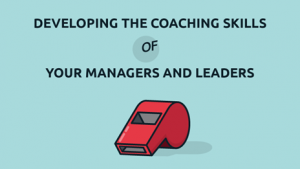Employee satisfaction is a main element in the formula for reducing employee turnover. The understanding among most employers is that by offering competitive pay and strong benefits, they can create happy workers.
But what exactly do employees value most?
In an article from HR Partner, they reported that six factors cause employees to leave their jobs:
- Manager or management
- Lack of fit
- Pay and benefits
- Flexibility
- Job security
- Career Advancement
In other words, if you can manage to take care of these six factors, you can retain your talented employees and lower costly turnover.
When you look at these factors, it’s clear why training for employees is a fundamental component of their satisfaction and retention.
Providing training means employees have career growth opportunities – they can upskill and reskill to become more versatile and perform more responsibilities of higher value. It’s also an effective way to build a stronger company culture, especially when well-trained managers fully understand how they can affect team dynamics and performance.
To retain employees and strengthen your workforce, it’s important to understand what employees value and the components of employee satisfaction.
Quality healthcare is far and away the top benefit that employees value the most. According to 2020 job statistics, one out of four people accepted or turned down a job because of the offered benefits.
Unfortunately, employers must consider the average cost of benefits for employees, and while healthcare is highly important, it’s also highly expensive. According to the Bureau of Labor Statistics, they state that “Employer costs for employee compensation for civilian workers averaged $39.01 per hour worked in March 2021”.
However, there are other benefits that lower employer costs that can benefit employee retention. A study by the Harvard Business Review showed that flexible hours and more vacation time were both taken under heavy consideration by employees when it comes to selecting and remaining with a company.
Offering these benefits will help optimize the benefits side of the employee retention formula, but that’s not all it takes, so let’s talk about the other top factors in employee satisfaction.
Competitive Pay Is a Baseline Consideration
A LinkedIn study revealed that 70% of professionals want salary to be among the first things they hear from a recruiter, and they want to hear about it from the first message. This shouldn’t be surprising – while other benefits certainly play a role in deciding where to work, if it’s not going to offer enough to pay the bills then it’s not worth the time and effort to pursue the job.
So competitive pay is understandably one of the first considerations employees make, but if you want workers who are happy in their roles and producing high-quality results, there are factors just as important as pay for your company to offer.
As Nobel Laureate Bob Dylan once said, “The times, they are a-changing,” and that’s certainly true for pay and workplace culture. Research shows that millennials value competitive pay less than Generation X and Baby Boomers do while placing a higher value on the social impact their company has.
Offering competitive pay is important, but for high employee satisfaction, your organization must take into account the greater impact that employees’ work has on society.
Developing Leaders and Managers Matters
If you’ve been on LinkedIn even once in the past couple of years, you’ve probably seen the statement that people don’t quit jobs, they quit bosses. The reality behind turnover is more complicated than that, but the statement has some truth to it – when we look at retention, and why employees leave jobs, it’s clear that the effects managers have on their employees matters.
Culture Amp looked at data provided by over 300,000 employees and confirmed that good management makes a difference, but there are larger factors that impact an employee’s commitment to stay with a company.
Their study suggested that job alignment, leadership, and learning and development were the most important factors in retaining employees.
They found that it wasn’t all about direct managers – it’s a combination of good management and good leadership that fosters commitment and creates happier workers. Only 22% of employees who have poor managers and poor leaders intend to stay with an organization.
Think about what this means for a minute – in a company with poor leadership and poor managers, four out of every five employees are waiting for their opportunity to leave. There is almost no way that a company with this challenge can be productive!
On the other hand, 89% percent of employees who say they have a great manager, and their company has great leadership, are committed to staying. Thus, if you’re analyzing your turnover and attempting to attribute your figures to a culprit, examining employee sentiment toward management and leadership is a great place to start.
Well-rounded and thoroughly trained managers and leaders are vital to the growth and continued success of any company.
If your company struggles with poor management or leadership, review these tips for developing the coaching skills of your managers and leaders.
Improving Company Culture
Company culture is directly related to your workplace values. It’s seen in the way things are done and the decisions that are made in an organization.
In a podcast episode, L&D Strategist Susan Daniel told us that her organization’s commitment to excellence is the key to their culture. All processes and all internal and external communications are driven by a dedication to excellence.
However, having workplace values won’t do much for your company if you don’t intentionally use those values to build a stronger culture.
Culture helps inform employees what types of behaviors are acceptable, how they can positively impact the organization, and what level of performance is expected throughout the company.
If you work in a fast-paced, competitive industry, you want people who are competitive and motivated to produce. If you work in an industry that rewards quality and creativity, you want to build a culture where employees feel free to try new things, brainstorm, and understand that patience will be rewarded. You also want a culture that recognizes how these attributes can differ across departments, and properly collaborate in their inter-departmental interactions.
Having an intentional culture that is lived out in the workplace will help you attract and retain the right employees!
Job Fit
The final thing employees value most is a job that aligns with their skill set. In a study that examined the top factors behind employee engagement, opportunities to use skills and abilities, the meaningfulness of the job, and the work itself were three of the top six factors behind employee satisfaction and engagement.
In other words, for employees to thrive, they need opportunities and roles where they can use and improve their skills. Keep in mind these key points when discussing employee job development:
- Keep employees informed of new openings across the organization
- Create a mentoring program
- Offer job shadowing
- Identify employees’ strengths and passions
Employee retention is one of the biggest challenges facing organizations today. You can increase employee satisfaction and create a happier workforce when you work to balance learning and development, competitive pay, workplace values, quality healthcare benefits, and leaders and managers who value the talent throughout your organization.


